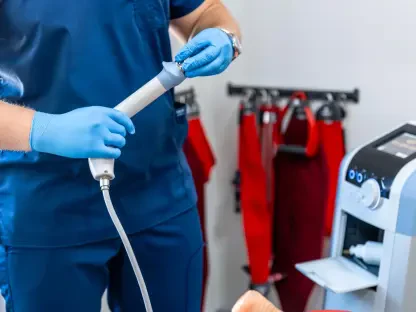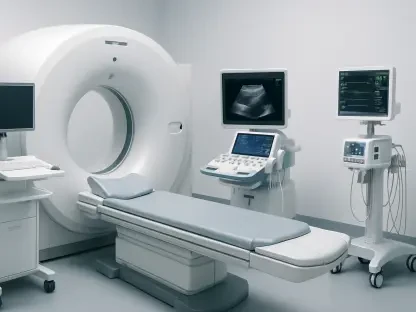In an era where biotech, pharma, and clinical research are being reshaped by a digital revolution, laboratories face an overwhelming challenge: managing an unprecedented flood of data generated by cutting-edge technologies and innovative methodologies. This surge in information, ranging from genetic sequencing results to clinical trial outputs, has rendered traditional tools like spreadsheets inadequate, creating significant bottlenecks in both diagnostics and drug research. Enter Laboratory Information Management Systems (LIMS), a transformative technology designed to streamline data handling, enhance workflow efficiency, and ultimately accelerate critical processes. The impact of LIMS is profound, offering a centralized solution to organize vast datasets while reducing errors and improving speed. As labs worldwide grapple with the pressure to deliver rapid, accurate results—whether for patient diagnoses or groundbreaking drug discoveries—this system emerges as a vital tool. Its ability to modernize operations in high-stakes environments promises not only to keep pace with industry demands but to redefine how medical advancements are achieved.
Tackling the Data Overload in Modern Labs
The exponential growth of data in laboratories today stands as one of the most pressing hurdles in scientific progress. With digital tools driving research—from high-throughput sequencing to complex clinical trials—labs are inundated with information that must be meticulously stored, analyzed, and protected. LIMS addresses this crisis by providing a scalable platform that centralizes data management, ensuring that critical information isn’t lost in a sea of numbers. Unlike outdated methods that struggle with volume, this system enables seamless organization, allowing researchers to access usable data swiftly. Such efficiency proves essential when time is of the essence, particularly in diagnostics where rapid decision-making can impact patient outcomes, or in drug development where delays can cost millions.
Beyond merely handling volume, LIMS excels in managing the intricate nature of lab data. It structures information in a way that’s both accessible and meaningful, sidestepping the pitfalls of manual tools like spreadsheets, which often lead to errors and inefficiencies. This structured approach is crucial when dealing with sensitive details, such as patient records or proprietary formulas, where inaccuracies can have severe repercussions. By minimizing risks and ensuring data integrity, LIMS empowers labs to maintain high standards of reliability. This capability directly contributes to faster diagnostic results and streamlined research processes, as scientists can trust the information they work with, reducing the need for time-consuming double-checks or corrections.
Enhancing Lab Efficiency with Automation
A defining strength of LIMS lies in its capacity to automate repetitive, labor-intensive tasks that have long bogged down laboratory workflows. Processes like data entry, sample tracking, and result documentation, once prone to human error, are now handled with precision through this technology. By cutting down on manual effort, the system not only reduces the likelihood of mistakes but also frees up skilled personnel to concentrate on more complex, value-driven activities such as data interpretation and experimental design. This shift in focus translates into significant time savings, enabling quicker turnaround for diagnostic reports that patients rely on and accelerating the testing phases critical to bringing new drugs to market.
Automation through LIMS also bolsters accuracy, a cornerstone of credibility in both clinical and research settings. With consistent data handling protocols, the technology ensures uniformity across thousands of samples or intricate test results, eliminating discrepancies that could derail progress. The impact of this reliability is far-reaching—labs can deliver dependable outcomes at a faster pace, directly influencing the speed of disease identification and the advancement of pharmaceutical solutions. As a result, what might have taken weeks under manual systems can often be accomplished in days, providing a competitive edge in an industry where every moment counts and precision is paramount.
Bridging Teams Through Seamless Integration
LIMS serves as more than a standalone solution; it acts as a vital link connecting laboratories to wider networks of collaboration. Its compatibility with other platforms, such as Electronic Lab Notebooks (ELNs) and external databases, facilitates smooth data exchange among diverse teams and organizations. This interconnectedness proves indispensable in large-scale drug development initiatives or multi-site diagnostic programs, where uniform access to secure information can determine the success of a project. By breaking down silos, LIMS ensures that all stakeholders operate with the same real-time data, fostering an environment where delays due to miscommunication or inaccessible records are significantly reduced.
Additionally, the system enhances internal lab communication by centralizing information in a unified, accessible format. Whether a sample is undergoing initial testing or final analysis, LIMS updates its status instantly, keeping technicians, researchers, and managers aligned on progress. This transparency minimizes misunderstandings and prevents bottlenecks that could slow down critical workflows. In practical terms, such clarity allows for rapid responses to emerging diagnostic needs or research challenges, ensuring that collaborative efforts remain agile. The result is a marked improvement in the pace of delivering medical results and advancing pharmaceutical innovations through shared, reliable data streams.
Customizing Operations for Diverse Lab Demands
LIMS distinguishes itself by offering tailored functionalities that address the specific operational needs of laboratories, regardless of their size or focus. Features like barcode-enabled sample tracking, precise inventory control for reagents, and optimized workflow management ensure that day-to-day activities run without disruption. By preventing issues such as stock shortages or misplaced samples, the system keeps labs focused on scientific inquiry rather than logistical hiccups. This practical support directly enhances the speed of processes, allowing diagnostic results to reach clinicians sooner and drug research to move forward without unnecessary pauses caused by resource mismanagement.
Equally important is the adaptability of LIMS to varying laboratory environments, from small research units to expansive clinical facilities. Its flexible design allows for customized workflows and detailed reporting that align with unique operational goals, ensuring that data isn’t merely managed but strategically utilized. Such customization empowers labs to pivot quickly in response to urgent diagnostic demands or shifts in research priorities, maintaining agility in a highly competitive field. By catering to specific needs while upholding efficiency, LIMS supports a faster path to medical breakthroughs, ensuring that labs remain at the forefront of innovation without being hindered by one-size-fits-all limitations.
Reflecting on the Path Forward with LIMS
Looking back, the adoption of Laboratory Information Management Systems marked a pivotal shift in how laboratories navigated the complexities of digital transformation. The technology proved instrumental in addressing the overwhelming data surge, streamlining operations through automation, and fostering collaboration across intricate networks. Its tailored solutions ensured that labs, regardless of scope, could maintain focus on scientific progress rather than operational setbacks. As a result, countless diagnostic outcomes were delivered with unprecedented speed, and drug development timelines saw remarkable reductions. Moving forward, the emphasis should be on further integrating LIMS with emerging technologies to enhance scalability and security. Labs must also prioritize training to maximize the system’s potential, ensuring staff are equipped to leverage its full range of capabilities. By continuing to adapt and invest in such tools, the scientific community can sustain momentum, driving faster, more reliable advancements in healthcare and beyond.









